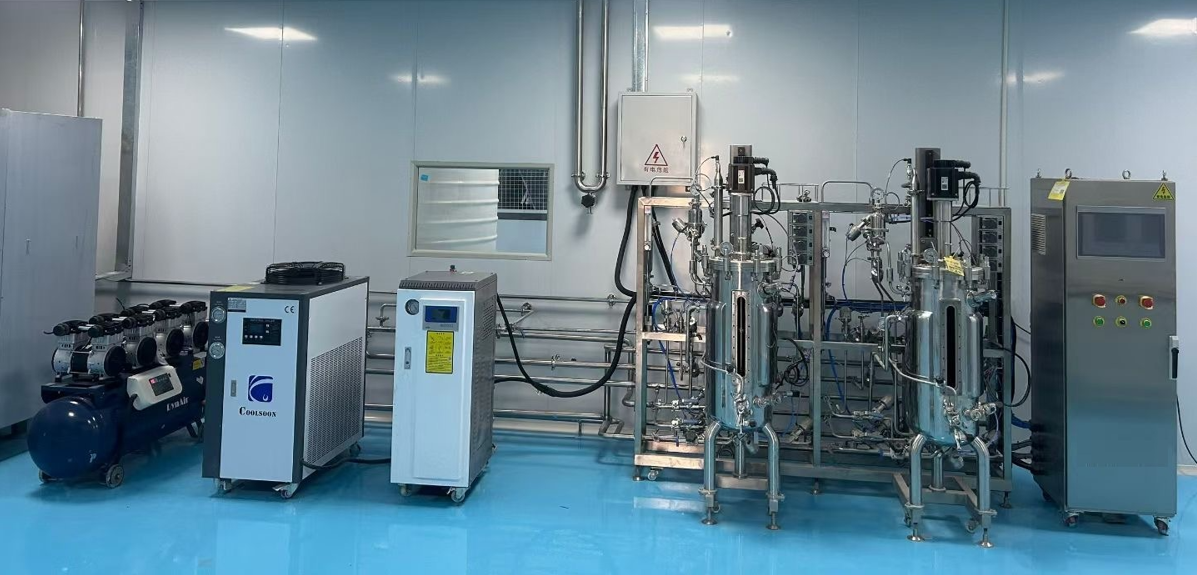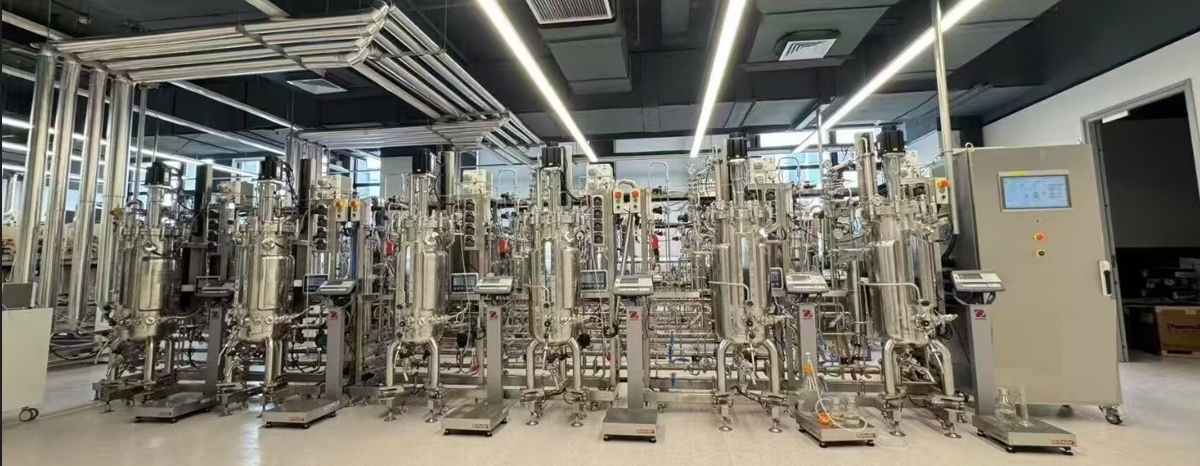I. Technical Preparation Before Use
1. Operator Training
The BioVita S bioreactor is a highly integrated electromechanical system. Operators must undergo professional training to become familiar with the system's principles, pipeline configuration, valve operations, and related auxiliary equipment, such as air compressors and steam generators. Untrained personnel are not permitted to operate the system independently.
2. Pre-Startup Inspection
- Ensure the power supply is stable.
- Check that the air compressor, steam generator, and cooling water system are functioning properly.
- Inspect all valves, joints, and fastening screws to ensure they are securely tightened.
- Pressurize the system to 0.15 MPa with air to check for leaks in the bioreactor, filters, pipelines, and valves.
- Calibrate the DO probe, pH probe, and PLC system according to the user manual.
- Ensure that operators are proficient in performing these operations.

II. Steam Sterilization (Empty Sterilization)
Before adding the culture medium, the air system, liquid system, and bioreactor must be sterilized using steam to eliminate contaminants and ensure sterility.
1. Air System Sterilization
-The air pipeline includes a water-removal pressure-reducing valve and a sterilization-grade air filter.
The water-removal pressure-reducing valve cannot be sterilized with steam.
Before introducing steam, ensure the valve leading to the water-removal pressure-reducing valve is closed so that steam passes through the sterilization filter.
- Keep the exhaust valve at the bottom of the filter slightly open to remove condensate.
- The sterilization process should last about 40 minutes. If the equipment is new or has been idle for a long period, intermittent sterilization (i.e., sterilize once, wait 3-5 hours, then sterilize again) may be required.
- After sterilization, blow dry the filter with sterile air for 20-30 minutes, then close all air valves.
2. Bioreactor Sterilization
- Steam is introduced directly into the bioreactor for sterilization.
- Keep the inoculation port, exhaust valve, and liquid feed valves slightly open to allow steam to escape while maintaining a vessel pressure of 0.13–0.15 MPa.
- The sterilization process should last 30-40 minutes. Intermittent sterilization may be used if necessary.
- After sterilization, drain condensate from the bioreactor.
Precautions:
- Before sterilization, drain water from the jacket and keep the jacket drain valve open to ensure complete drainage.
- Remove the DO and pH electrodes before sterilization to extend their lifespan.
III. Media Sterilization (Actual Sterilization)
Actual sterilization refers to the process of sterilizing the culture media inside the bioreactor using steam.
Steps:
1. After empty sterilization, calibrate and reinstall the pH and DO electrodes before adding the prepared culture media through the feeding port. Ensure no cooling water remains in the jacket.
2. Pre-gelatinize the culture media before loading it into the reactor. Typically, the media volume should be 70% of the total tank capacity (65% for foamy media, up to 75-80% for non-foamy media). To account for condensate and inoculum volume, add water equivalent to 50-60% of the total tank capacity (adjustable based on media temperature and steam pressure).
3. Preheat the media using steam in the jacket (pressure ≤0.1 MPa) until the temperature reaches 90°C, then switch to direct steam injection into the bioreactor.
4. When the vessel pressure reaches 0.12 MPa and the temperature reaches 121-123°C, control the steam valve opening to maintain constant pressure for 30 minutes, then stop the steam input.
5. Cool the media by introducing cooling water into the jacket.
Precautions:
- During cooling, when the vessel pressure drops rapidly to 0.05 MPa, slightly open the exhaust and air intake valves, start the stirrer, and introduce air to accelerate cooling while maintaining 0.05 MPa pressure until the target inoculation temperature is reached.
IV. Inoculation and Fermentation
Inoculation Procedure:
1. Flame-sealed inoculation or a four-valve inoculation system may be used. Prepare alcohol-soaked cotton, forceps, tweezers, and inoculation loops in advance.
2. Place the inoculum in an Erlenmeyer flask, with the inoculum volume determined by the process requirements.
3. Wrap the inoculation port with alcohol-soaked cotton and ignite it. Use forceps or a metal rod to unscrew the inoculation port while introducing sterile air into the reactor to expel contaminants.
4. Pour the inoculum into the reactor within the flame ring.
5. After inoculation, sterilize the inoculation port with flame, then seal it tightly.
6. Begin aeration after inoculation and maintain the vessel pressure at 0.05 MPa.
7. Control fermentation temperature by adjusting the cooling water temperature. Use cold water if the ambient temperature exceeds the fermentation temperature.
8. Regulate dissolved oxygen (DO) levels primarily by adjusting the aeration rate.
9. pH adjustment is controlled by an automatic peristaltic pump that adds alkaline solution as needed.
10. Foam detection is performed using a foam probe, which activates an indicator light on the control panel.
11. Sampling:
- Before sampling, sterilize the sampling valve and pipeline with steam to prevent contamination.
- After sampling, flush the sampling valve and pipeline with steam to maintain sterility.
V. Harvesting
1. The bioreactor discharges the fermentation broth using vessel pressure, which should be maintained at 0.05–0.1 MPa depending on broth viscosity.
2. Remove the DO and pH electrodes after discharge, then clean and store them properly.
3. Immediately after discharge, rinse the bioreactor, pipelines, and valves with water. Use the air compressor to supply sterile air for stirring and flushing residual broth from the pipelines.
VI. Maintenance and Storage
Maintenance Guidelines:
- Keep the installation area clean, dry, and well-ventilated. Avoid water or steam coming into direct contact with electrical components.
- Clean the equipment immediately after use to prevent fermentation residue from hardening inside the tank, pipelines, and valves.
- Maintain and store the DO and pH sensors according to the manufacturer's instructions. Calibrate pressure gauges, safety valves, and temperature sensors annually.
Long-Term Storage:
- Clean and dry all components when the bioreactor is not in use.
Remove and clean filter elements, allow them to air-dry, and store them properly.
Loosen flange tightening nuts to prevent permanent deformation of the sealing gasket.






